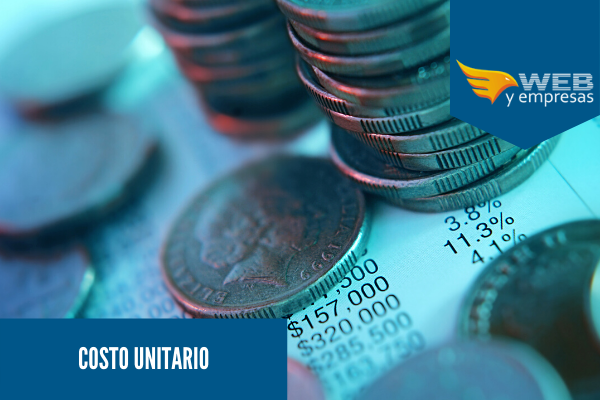Unit cost is the total amount spent on a production process of any company. Either when manufacturing products, offering services among other business models. For any investor, this is a fundamental indicator to assess the economic viability and sustainability of the business.
After all, it is the most basic rule of finance: to make a profit, you must spend less than you earn.
Advertisements
Thus, you can analyze an organization's financial health and growth potential by comparing the cost of production to total revenue, determining its profitability. But, of course, this is a detailed calculation, involving all of the company's cost accounting.
In the First Industrial Revolution, it was much easier to calculate production costs, as companies used primarily standardized raw materials, labor, and equipment.
Advertisements
With the evolution of technology and production processes, numerous costs and expenses were added to the account, from expenses with transportation of materials to salaries and professional commissions.

Advertisements
In this article you will find:
Definition
The study of cost accounting emerged many years ago, along with the advent of the industrial revolution. The objective of studying the unit cost of production is to prepare an available inventory in a given production period, in which it is sought to identify the value of manufactured products.
Unit cost can be defined as all costs related to the production chain of a company. They can be segregated into indirect costs, direct material and direct labor. It is a tool widely used by companies in general, as a concept that serves as the basis for making decisions about the sustainability of a certain company.
Advertisements
For the survival of a company, this study is one of the most important topics in an economic viability analysis, serving as an indication to choose the best production alternatives, always with the objective of maximizing the returns.
Given that the market is currently increasingly competitive and innovative, the alternative of always seeking to reduce the costs of production of a company can be very favorable for the company to be more prepared to serve the consumer at lower prices low.
Advertisements
Types
To calculate the unit cost, the entrepreneur must consider three large groups of expenses:
- Workforce
- Materials
- General manufacturing costs (depreciation, electricity, maintenance)
To calculate the cost of the raw material, the entrepreneur must take into account all the values involved. The price of the material, shipping, insurance and taxes must be included.
To obtain the cost of labor, the gross salary of the employees, general social charges, in addition to uniforms, PPE and training must be included in the calculations.
With the sum of all these variables in hand, the entrepreneur should multiply the daily working hours by the working days of the year. So, by dividing the employee's total expense by the hours worked, the cost per hour is obtained.
Finally, other calculations must be included in this production cost account. Rental values, machinery, maintenance costs, equipment depreciation, among others.
Note that these variables are much more fickle and need to be more carefully monitored by the person responsible for doing these calculations.
How is the unit cost calculated?
To calculate the total cost of production of a company, you must take into account two basic types of indicators:
- Direct costs: costs directly related to production processes, which are included in the price of products (for example, raw materials and labor).
- Indirect costs- These are not directly related to the company's core business, such as energy, rent, and general administrative costs.
It is also possible to classify costs into fixed and variable, depending on the period and also in relation to internal categories (personnel, taxes, consumables, outsourced services, etc.).
Fixed costs
Fixed costs are those that do not vary according to the amount produced by the company, such as equipment rental or employee salaries.
Basically, they are expenses that are stable for the company to operate and are not directly affected by the volume of production or sales.
Here are some examples:
- Rental of offices, logistics warehouses and rooms
- Employee salaries, positions and benefits
- telecommunications and internet services
- Software and systems fees
- Security services, cleaning and any outsourced activity.
To find out what the average fixed cost of the business is, simply divide the total fixed costs by the quantity produced in the period.
For example, if a textile company has a total fixed expense of $ 200,000 - factory rent, labor, machinery, administration, etc. - and produces 100,000 t-shirts in a month, we have the calculation:
$ 200.000,00 / 100.000 = $ 2,00
Therefore, the fixed cost per unit produced is two dollars.
Variable costs
Variable costs are proportional to the volume produced in the period, such as inputs and raw materials used (or even hours of work).
That is, any expense that increases as production grows is a variable cost, for example:
- Supplies of raw materials, supplies and equipment
- Consumption bills such as water and electricity.
- Freight for transportation and delivery of products
- Sales commissions
- Marketing and advertising funds.
Assuming that the T-shirt company in the previous example added $ 600,000 in variable costs in the same period, the average variable cost would be:
$ 600.000,00 / 100.000 = $ 6,00
Unlike the fixed cost, this value fluctuates more frequently, depending on the production capacity of the company.
Total cost
The total cost is the value that most interests investors, since it represents the sum of all the costs that we saw previously.
In the case of our T-shirt factory, it would be enough to add $ 600,000 in variable costs and $ 200,000 in fixed costs, reaching $ 800,000 in total costs.
To arrive at the average total cost, simply divide again by the units produced:
$ 800.000,00 / 100.000 = $ 8,00
Based on this amount, the company can set the price of its products and include the ideal profit margin, guaranteeing a return to shareholders.
So if you're going to bet on a deal, it's best to make sure the sales cover the full costs and still reward investors.


